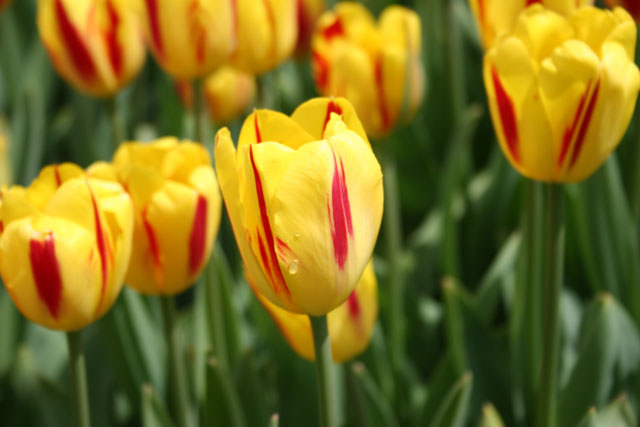It’s almost fall in many parts of the country and that means one thing… fall planting! Now is the time to start planning out your spring garden by selecting bulbs you’d like to plant now. Many people don’t realize that you need to plant in fall in order to get gorgeous spring blooms and we don’t want you to miss out any longer! This is part one of a two-part post on fall planting. Today we’ll explain the basics of fall planting and bulbs. Next, we’ll share some of our favorite bulbs and some tips on how they can look great in your yard, too!

What is a bulb?
One of the first things to understand when getting started with gardening is the difference in terms used when referencing a plant’s storage organ. Many times, the word “bulb” is misused when describing the root system (or storage organ) of a bulbous plant. Not all bulbous plants are true bulbs. Below we list the most common types for fall planted bulbs:



- True Bulb: A true bulb is a compressed stem formed from layers of modified leaves that enlarge as they store nutrients. The roots are produced from the bottom of this bulb and the stem will emerge from a growing point at the top. Some bulbs have dry outer scales called a “tunic” that helps to protect the inner parts of the bulb from over-drying. Examples: Tulips, Daffodils, and Allium.
- Corm: A corm is a mass of stem tissues, often bearing a terminal bud on the top and several other lateral buds. Dry leaf bases (similar to tunics) help protect the stem of the corm from harsh weather conditions and lack of moisture. Example: Crocus.
- Rhizome: Rhizomes are swollen stems which grow horizontally below or just at the soil’s surface. The length of these rhizomes produces multiple eyes ( or buds) which send shoot above the ground. Roots grow from the underside of these storage organs. Example: Bearded Iris
- Tuberous Root: Tuberous roots are true roots which are swollen with stored food and nutrients. The buds are only present at the crown or the stem end of the root with thickened, fleshy tubers scattered along the length of the root. Example: Ranunculus.
Bulbs Have a Life Cycle
- Dormancy: The bulb is dormant and has been gathering energy after its spring bloom for the last several months. It will remain this way unless it is harvested for fall planting.
- Planting: The bulb has been planted and is now forming roots to prepare for winter. It is continuing to gather energy for its blooms.
- Pre-Bloom: New growth emerges through the soil as soil temperatures warm in the late winter and spring.
- Bloom Time: The bulb has spent almost a whole year gathering energy for its spring blooms. It has rested and received the proper amount of light, moisture and cold temperatures and is now ready to bloom.
- Preparing for Dormancy: Once the blooms have faded, the foliage begins to yellow and fade away. The bulb is not dying, but rather gathering energy through the leaves for the next season’s blooms. It is important to allow the leaves to complete this portion of the cycle prior to removing the foliage since it is still making food for the next spring’s blooms.

Plant Things According to What Zone You Live In
Gardeners need a way to compare their garden climates with the climate where a plant is known to grow well. That’s why climate zone maps were created. Zone maps are tools that show where various permanent landscape plants can adapt. If you are looking for a shrub, perennial, or tree to survive and grow year after year, the plant must tolerate year-round conditions in your area (hardiness zone), such as the lowest and highest temperatures and the amount and distribution of rainfall. To find what zone you live in, click here.


